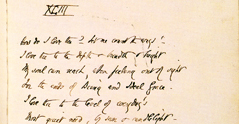STOCK EXCHANGE OFFICIAL YEAR-BOOK, 1875-1945
Part 2: 1896-1910
Officially authorised by the London Stock Exchange, this microfilm edition makes available a complete run of the Stock Exchange Year-book (renamed the Stock Exchange Official Year-book in 1909) for the period 1875 – 1945. It includes a copy of the extremely rare first volume (not held by the London Stock Exchange or Guildhall Libraries) and due to the choice of the Comic (2A) filming format and the use of a low reduction (8x – 10x) these densely packed volumes are easy to read and will produce clear printouts. In consequence this microfilm edition makes more reels that rival editions, even though it is sold for the same price.
The London Stock Exchange was at the centre of the world’s financial and trading markets from 1875-1945. It was the place to raise capital and almost every country in the world featured in its lists of government securities and company stocks. The strength of the British economy in the period and the international spread of the British Empire contributed to its importance.
The Stock Exchange Year-book started in 1875 and quickly grew in size and stature, eclipsing rival publications. Its readers acknowledged it as an essential reference source for tracking the growth and the development of individual companies, international markets and the economy as a whole.
Today, it is acknowledged as a basic reference source for economic and business historians, but one for which most libraries only hold scattered issues. Even where volumes are held these are often in a poor state of repair due to the fragility of the paper and bindings and the heavy usage of such unwieldy volumes over time.
We can now offer a complete 70 year run of the Year-Book from 1875 to 1945, tracing the development of British Commonwealth and World finance and industry from the heights of the Victorian era to the end of the Second World War.
Every issue is packed with detail and is extensively indexed. They are large volumes. In the preface to Volume 2 for 1876 it is stated that “it is the object of the STOCK EXCHANGE YEAR-BOOK to give an account of every public company and security known in this country.”
Furthermore, to provide “a careful digest of information relating to the origin, history, and present position of each of the Joint Stock Companies and Public Securities known to the markets of the United Kingdom.” The volume then proceeds with an index to c1400 companies featured ranging from Aberdeen Jute through Baltic Iron Ship Building, Direct United States Cable, Lady Well Mining and Scottish Widows’ Fund and Life, to the Zealand Railway.
The volume then lists:
- Government Securities – Home, Colonial & Foreign (including: Bolivia; China; Columbia; Denmark; Egypt; India; Jamaica; Japan; Louisiana; NSW; New Zealand; Quebec; Russia; Santa Fe; Tasmania; Victoria; and Virginia. Of Arkansas it notes: “this state, happily little known to European investors, appeared in this market in March 1872.”)
- Railways (including: Antwerp and Rotterdam Railway Co; Baltimore & Potomac Railroad Co; Bolivar Railway Co; East Bengal Railway Co; Great Western Railway; Royal Swedish Railway Co; Union Pacific Railroad Co.)
- Banks (including: Anglo-Austrian; Bank of England; Bank of South Australia; Lloyds Banking Co; Midland Banking Co – established in 1863; Yorkshire Banking Co)
- Insurance (including: Alliance; British & Foreign Life & Fire Insurance Co; Legal and General Life Assurance Co – founded in 1836)
- Tramways, Telegraphs, Gas and Water, Mines, Steamships, and Trusts, Miscellaneous Bonds
- Miscellaneous Companies (including: Artisans’ Labourers’ & General Dwellings Co Ltd; British American Land Co; Darlaston Steel & Iron Co Ltd; Hudsons’ Bay Co; Asiatic & American Co Ltd; London Tavern Co Ltd; River Plate Pressure Meat Preserving Co Ltd; Worcester & Birmingham Canal Co)
For each company the volume gives lists of Directors, dates of establishment, capital value and the amount paid up or subscribed, details of trading, dividends and dates of meetings.
Subsequent volumes follow the same general format, but new categories are included and the list of companies covered expands dramatically. By 1886 there are close to 3,400 companies listed. By 1906 this grows to 7,200; by 1926 it reaches 15,000; and by 1936 it reaches 27,600 companies.
In later volumes specific listings are given of: Lighting & Water Companies; Mining Companies, Iron; Coal and Steel Companies; Land Investment Finance & Discount Companies; Rolling Stock Companies; Tea, Coffee and Tobacco Plantation Companies; Hotel, Brewery and Distillery Companies; Dock, Canal and Harbour and Shipping Companies; Dock, Canal and Harbour and Shipping Companies; Oil Companies.
Further invaluable data added concerns; Reviews of the Year; Statistical Analysis of the growth of commerce; Notes on Stamp Duties and Bank of England Rates of Discount since 1871; Lists of Trustees and Managers of the Stock Exchange; Lists of Brokers; Company Law; Municipal Finance; and much more.
As such, these volumes are an indispensable source for studying:
- The Growth of World Trade
- British Economic History 1875-1945
- Particular sectors of the international economy (e.g. oil, banking, land development)
- Company Histories
Writing in 1900, Charles Duguid described the London Stock Exchange as “… the mart of the world, the nerve-centre of the politics and finances of its nations, the barometer of their prosperity and adversity”. Using these volumes we can chart the highs and lows of international commerce and interpret the economic and business history of this period.
|















